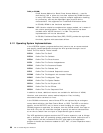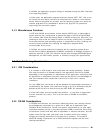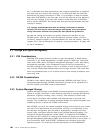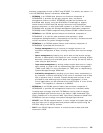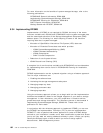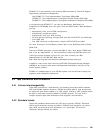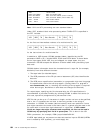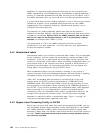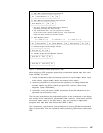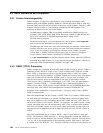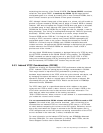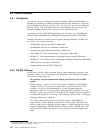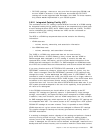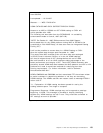statement. If a tapemark might precede the first data set and you specify the
LABEL subparameter LTM, OS/390 tests for and bypasses a leading tapemark, if
present. If a tapemark precedes the first data set and you do not specify LTM in
the LABEL parameter field, you must add one to the data set sequence number.
If a multivolume data set has a leading tapemark on one or more of the volumes,
OS/390 can process it as an unlabeled multivolume data set if the LABEL
subparameter LTM is specified. Otherwise, OS/390 cannot process it as an
unlabeled multivolume data set.
The presence of a leading tapemark makes each data set the second in
sequence on the tape. However, OS/390 always assumes that data sets are first
in sequence on the tape. Specify LTM in the LABEL parameter field, so the first
data set on a tape can be accessed whether or not it is preceded by a leading
tapemark, for example code LABEL=(1,LTM).
The specification of LTM in the LABEL parameter field does not make
allowances for any other tapemarks. You must make any such adjustments in
the data set sequence number.
5.4.4 Nonstandard Labels
Nonstandard labels do not conform to standard label formats. They are designed
by the installation, and are written and processed by routines provided by the
installation. There are no requirements as to the length, format, contents, and
number of nonstandard volume labels. When processing nonstandard labels, you
must perform many of the functions that control program or IOCS performs in
processing standard labels. All input/output operations, such as reading and
writing labels, are performed by using the EXCP macro.
When nonstandard labels are to be created or checked, a user routine is
required. Because of the basic differences between VSE and OS/390 in handling
nonstandard labels, this portion of VSE programs requires rewriting.
Under VSE, nonstandard label processing is included as part of the user
program when the DTFMT contains the parameters, FILABL=NSTD and
LABADDR=name. IOCS OPEN and CLOSE routines provide the entry point for
user processing of nonstandard labels according to the LABADDR parameter in
the DTFIMT. If you omit this parameter with nonstandard labels, IOCS bypasses
label processing. It is your responsibility to conform to standard register
conventions. Only one nonstandard label routine is supported for each file, but
multiple DTFs may share a common routine. No VSE job control language
statement is required to define a nonstandard label. Figure 7 on page 107
illustrates nonstandard labels supported under VSE.
5.4.5 Bypass Label Processing Facility in OS/390
Should you run across VSE labels that cannot be processed by OS/390, you can
use the OS/390 ″bypass label processing″ facility. Specifying BLP in the OS/390
JCL LABEL parameter (LABEL=(,BLP)) requests the system to bypass label
processing. When used, the operator must ensure that the correct tape volume is
mounted. The BLP parameter should only be used for unique situations, and its
use should be controlled.
106 VSE to OS/390 Migration Workbook



